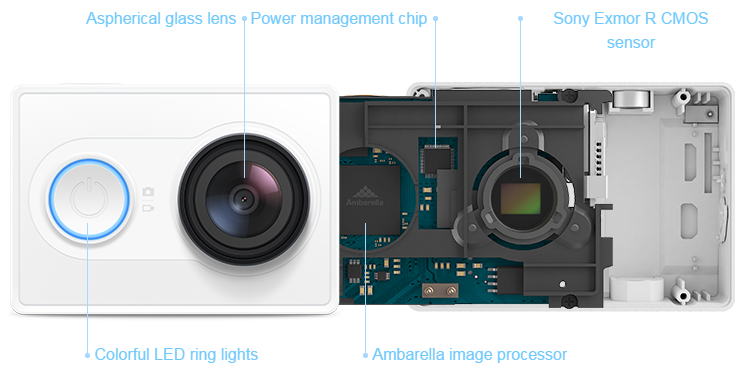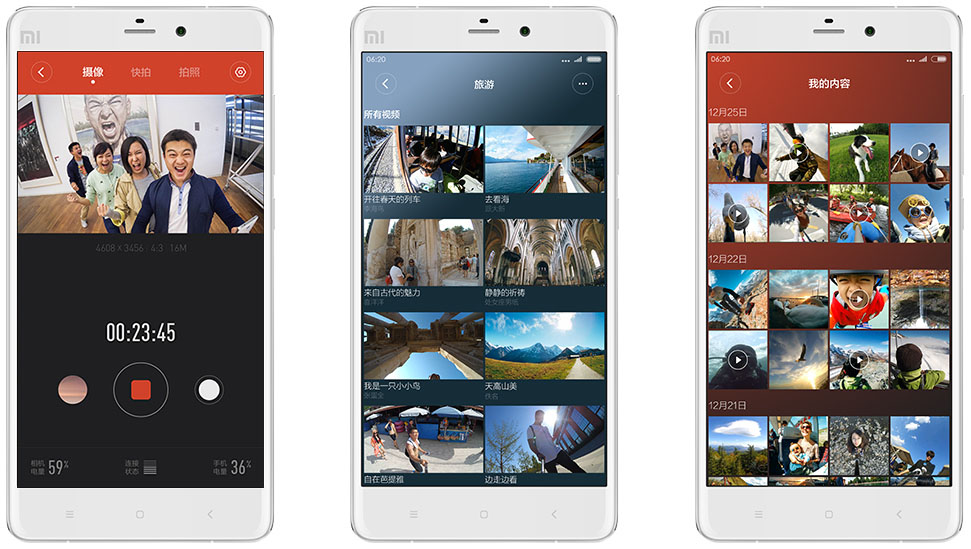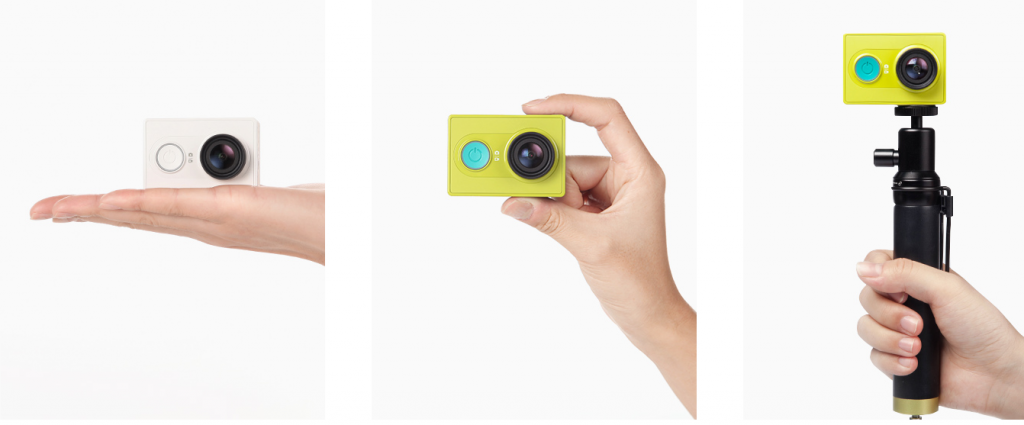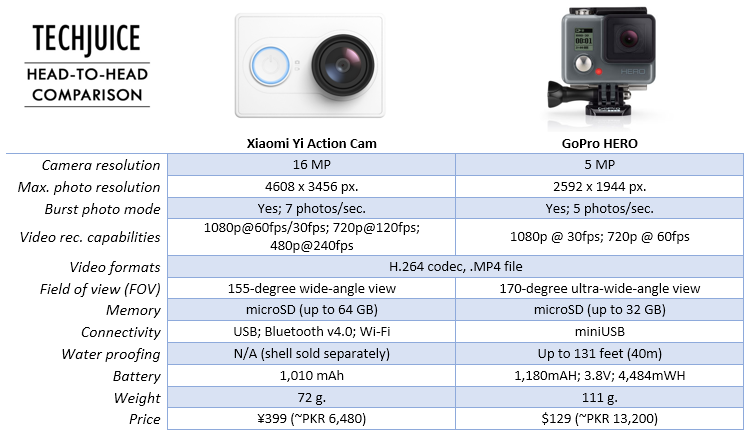China-based consumer electronics manufacturer Xiaomi has entered yet another technology domain with an ambitious little action cam called Xiaomi Yi Action Cam. The camera was introduced for the first time at the Mobile World Congress 2015 currently underway at Barcelona, Spain, and the base model of the camera costs ¥399 (about $64; Rs. 6,500).
For its price, the Yi cam is loaded with some exceptional hardware: The Yi action camera uses a 16 MP camera with Sony’s Exmor R back-illuminated CMOS image sensor. It is capable of shooting 1080p videos at 60fps and 30fps. 720p video shooting at 120fps and 480p at 240fps are also supported.

Photo shooting capabilities include 4608 x 3456 px. images and burst shots of up to 7 photos per second. The lens uses a wide-angle 155-degree Field of View (FOV) to capture the scene in more detail as compared to your regular smartphone cameras.
Yi Action cam uses the standard H.264, MP4 format for high-fidelity video recording. 3D noise reduction and digital image stabilization are included for better overall video result. The camera comes with dedicated iOS and Android apps which can be used as a soft trigger for capturing photos and videos, moving them from camera to the phone, and applying different effects and filters.

As far as connectivity goes, the camera supports the regular USB cable, Bluetooth, and Wi-Fi connectivity, something which is novel in this price range. Up to 64 GB of microSD cards are supported. The only apparent disappointment one can find is the lack of packaged water-proof shell which is sold as a separate accessory. There is an $80 Travel edition of the Yi Camera available as well, which adds a selfie-stick to the package.

The closest rival to the Yi camera is GoPro HERO, which is its parent company’s cheapest entry-level action camera. Despite costing twice as much as Yi, HERO is trumped by the Yi Cam in almost all performance metrics – at least on paper. It doesn’t have an LCD like Hero’s to show recording information; the front is dominated by the lens and a power button around which a battery indicator LED is present. Here’s a spec-by-spec comparison of the two:

Xiaomi is famous around the world for its Mi and Redmi smartphone lineups which are sold for exceptionally low margins. Xiaomi made headlines in the past for snatching Google’s Hugo Barra who is now the International VP at the company.
Has the company managed to make a killer camera that can best its costly competitors in its very first attempt can only be judged once it is widely available, but one thing that is certain from this announcement is Xiaomi’s ambitions know no bounds. Highly-competitive pricing is one of the company’s primary strategies that will slowly but surely give rise to an ecosystem in its favor in the long-run, which is apparently what the company has been targeting for since its inception.











